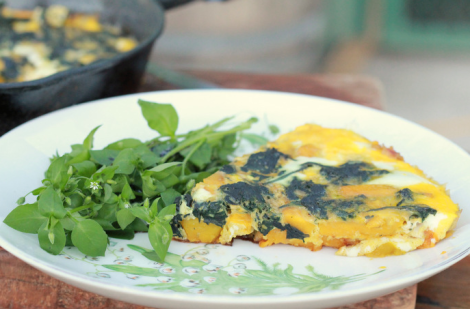Eating local and sustainable food adds meaning and interest to my life. Environmental benefits aside, sitting down to a meal where I can name the source of the food on my plate warms my heart.

Shopping at farmers markets, local farm gate stalls and though food co-ops connects me with my food and community. But growing and foraging food is where I find real joy.

Two of my favourite weeds to forage are in season here in Australia at the moment – Chickweed and Stinging Nettle , offering a free source of delicious and nutritious local food.
Foraging Stinging Nettle
Nettle is typically found in damp, rich soil. The most common places I have encountered it is in camp grounds, along creeks, along paddock fences, and near old abandoned buildings.
To avoid its sting (which conveniently makes it easy to identify), when harvesting nettle I wear dish washing gloves or place plastic bags over my hands.
My favourite use for nettle is to make nettle tea . I also use it in much the same way you would spinach – in pie, frittata, soups, and risotto. Steaming or blanching the leaves removes the sting.
Foraging Chickweed
Chickweed is a common garden weed that can be found growing in good moist soils in the cooler months. You’ve probably been pulling it out of your vegetable garden. But it’s too good to waste. It has a lovely delicate flavour and is perfect as a salad green.
Identifying Chickweed is easy once you know what to look for. It has small white flowers. Each flower has five petals that are deeply lobed which makes the flowers look like they have ten petals. The stems also have a single row of hairs which will distinguish it from its many look-alikes.
Foraged nettle frittata with a side of foraged chickweed

Frittata is an easy introduction to cooking and eating foraged greens.
A range of foraged greens can be used in this recipe in place of Stinging Nettle, including Purslane , Scurvy Weed , and Warrigal Greens .
Serves 4 – 6
1 large bunch of Stinging Nettle or other foraged greens.
1 large bunch of Chickweed
1 Tbs oil
1 diced onion
8 free-range local eggs
Around 400g of diced pumpkin, potato or sweet potato (depending on what is in season)

- Wearing gloves, remove stinging nettle leaves from the stem and wash.
- Drain leaves briefly, but leave damp.
- Place leaves in a hot skillet, cover and steam briefly until wilted.
- This removes the sting. Place leaves aside to cool.
- In the same skillet, heat the oil and fry onion for a few minutes.
- Add pumpkin, cover and cook until tender.
- Chop wilted nettle and scatter across the top of the cooked pumpkin.
- Wisk eggs and pour over the onion, pumpkin and nettle mix.
- Cover and cook on low until set.
- Add a side of Chickweed and you have a delicious, local and frugal meal.
Do you forage for food, or are you tempted to give it a go?
Don’t forget to head over to our website! We are daughters, mothers, sisters and grandmothers getting on with practical climate action to live better for us and the planet. Join the movement at www.1millionwomen.com.au
